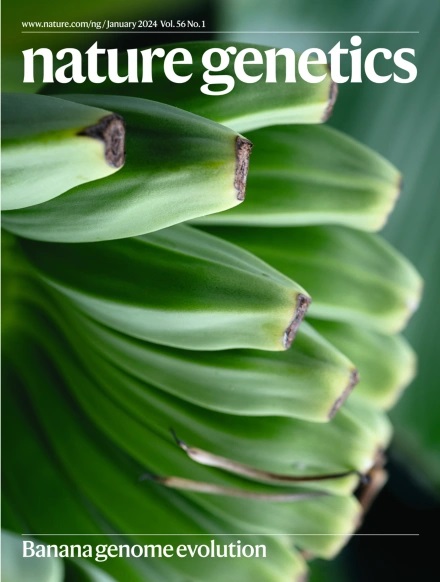脆性X综合征的治疗策略及其对其他基因沉默疾病的影响
IF 29
1区 生物学
Q1 GENETICS & HEREDITY
引用次数: 0
摘要
基因沉默障碍,其中脆性X综合征(FXS)最为普遍,是由基因转录阻断引起的疾病,通常是由于DNA超甲基化。FXS是一种常见的遗传性智力残疾和自闭症。与大多数由基因蛋白质编码区突变驱动的遗传性疾病不同,FXS是由FMR1基因5 ' -非翻译区域的三核苷酸扩增引起的,导致高甲基化和转录沉默。利用人多能干细胞对FXS进行建模,通过遗传和表观遗传手段或通过药物筛选重新激活FMR1表达,为研究疾病机制和探索潜在的治疗方法提供了临床相关的平台。本文回顾了过去十年中提出的各种细胞模型和治疗策略,强调了它们在推进FXS治疗方面的潜力。我们还讨论了基因激活疗法的益处和挑战,并与其他基因沉默疾病(包括印记疾病和x连锁疾病)进行了比较。本文章由计算机程序翻译,如有差异,请以英文原文为准。


Therapeutic strategies for fragile X syndrome and implications for other gene-silencing disorders
Gene-silencing disorders, of which fragile X syndrome (FXS) is the most prevalent, are diseases caused by a blockade of gene transcription, usually due to DNA hypermethylation. FXS is a common form of inherited intellectual disability and autism. Unlike most hereditary diseases driven by mutations within the protein-coding region of a gene, FXS is caused by a trinucleotide expansion in the 5′-untranslated region of the FMR1 gene, leading to hypermethylation and transcriptional silencing. Modeling FXS with human pluripotent stem cells offers a clinically relevant platform to study disease mechanisms and explore potential therapies through reactivating FMR1 expression by genetic and epigenetic means or through drug screening. This Perspective reviews the various cellular models and therapeutic strategies proposed over the past decade, highlighting their potential to advance the treatment of FXS. We also discuss the benefits and challenges of gene activation therapies, drawing comparisons with other gene-silencing disorders, including imprinting diseases and X-linked disorders. This Perspective discusses therapeutic strategies to reactivate the silenced gene in fragile X syndrome by genetic and epigenetic means and drug screening and their relevance for other gene-silencing diseases, such as imprinting or X-linked disorders.
求助全文
通过发布文献求助,成功后即可免费获取论文全文。
去求助
来源期刊

Nature genetics
生物-遗传学
CiteScore
43.00
自引率
2.60%
发文量
241
审稿时长
3 months
期刊介绍:
Nature Genetics publishes the very highest quality research in genetics. It encompasses genetic and functional genomic studies on human and plant traits and on other model organisms. Current emphasis is on the genetic basis for common and complex diseases and on the functional mechanism, architecture and evolution of gene networks, studied by experimental perturbation.
Integrative genetic topics comprise, but are not limited to:
-Genes in the pathology of human disease
-Molecular analysis of simple and complex genetic traits
-Cancer genetics
-Agricultural genomics
-Developmental genetics
-Regulatory variation in gene expression
-Strategies and technologies for extracting function from genomic data
-Pharmacological genomics
-Genome evolution
 求助内容:
求助内容: 应助结果提醒方式:
应助结果提醒方式:


